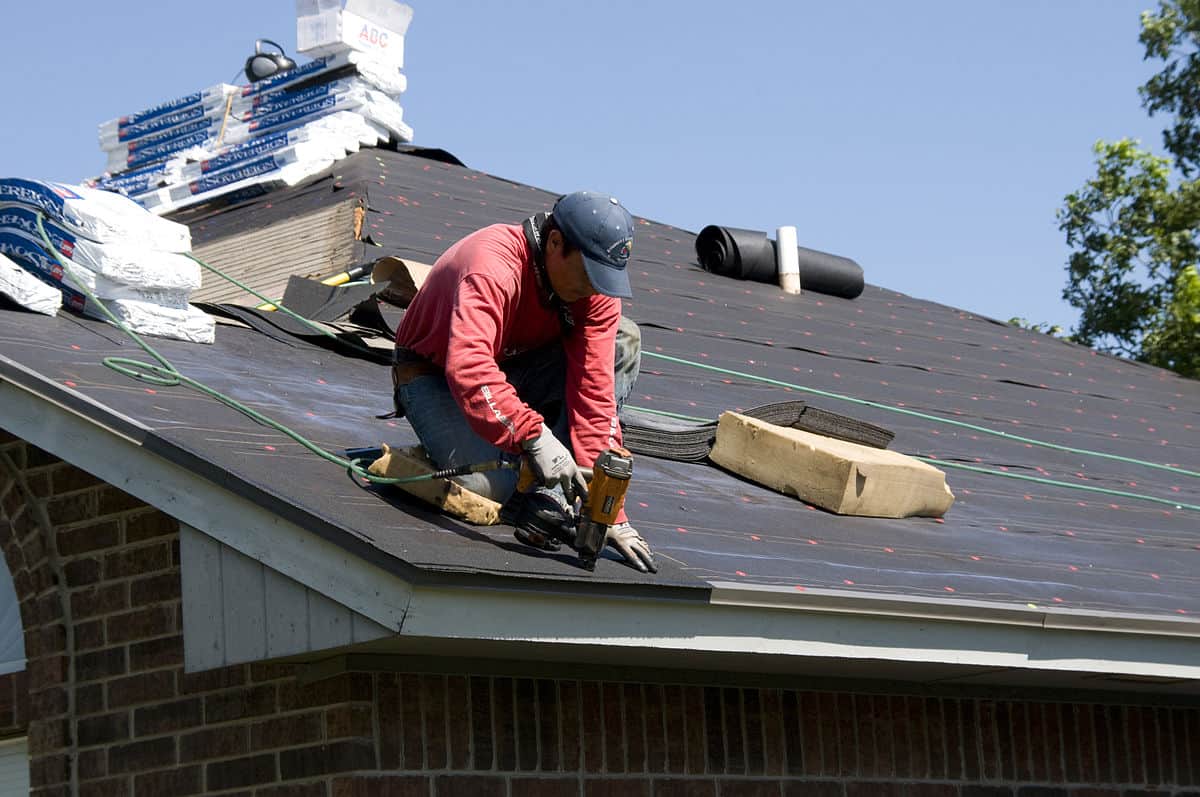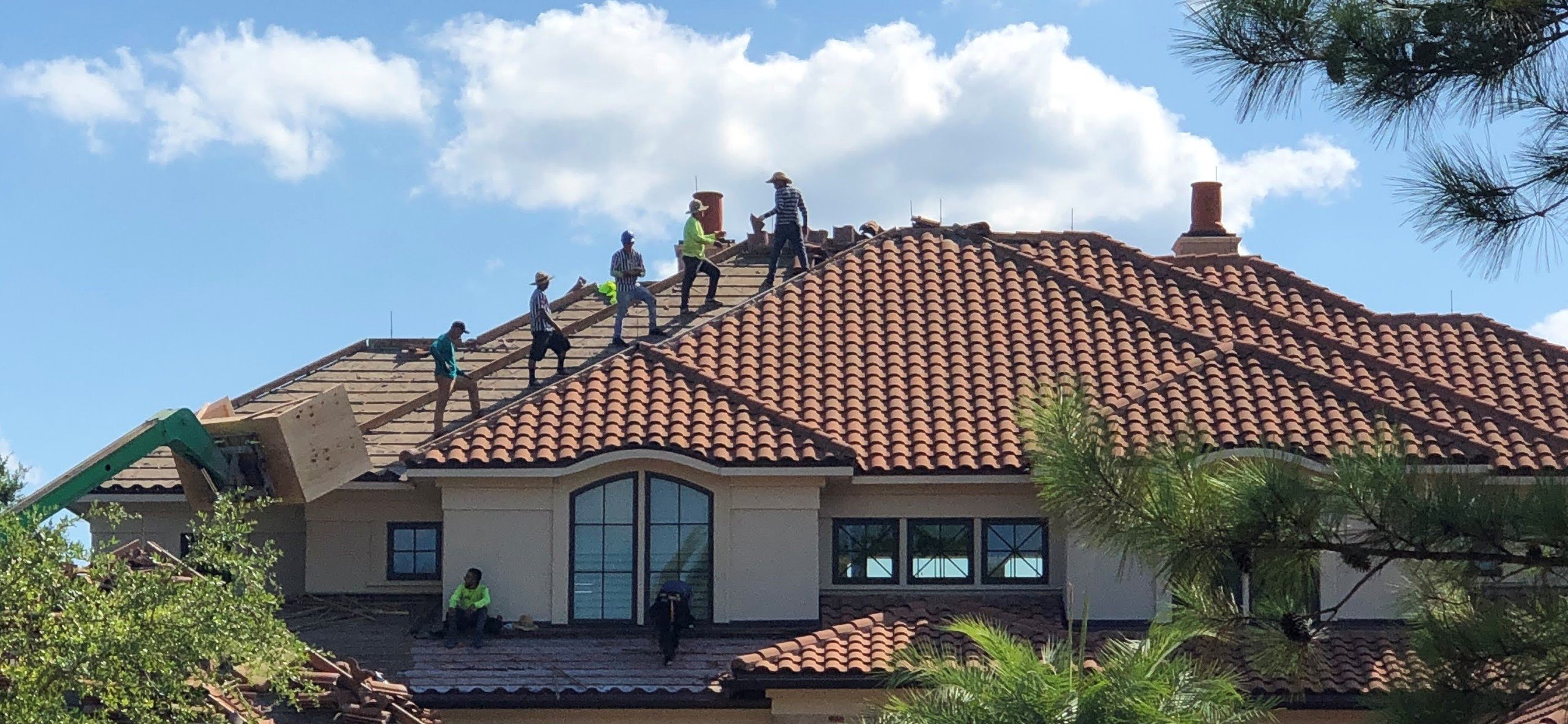Client Reviews on the very best Gainesville FL Roofing Companies Offered
Client Reviews on the very best Gainesville FL Roofing Companies Offered
Blog Article
Ideal Practices for Ensuring Appropriate Roof Air Flow
A well balanced intake and exhaust air vent ratio, commonly 1:300, plays a crucial role, with consumption vents preferably put at the reduced edge of the roof covering for amazing air entrance and exhaust vents at the top for warm air departure. Keeping insulation away from vents is critical to prevent air movement constraint.
Understand Ventilation Essentials
Effectively recognizing air flow basics is essential for making sure the durability and performance of roof. Efficient ventilation mitigates moisture accumulation and temperature extremes in the attic room, both of which can cause significant architectural damages in time. A well-ventilated roofing system aids in preventing usual concerns such as mold development, wood rot, and ice dams, which can compromise the integrity of the roof covering products and the underlying structures.
The main goal of ventilation is to assist in the motion of air, allowing for a regular exchange in between the exterior and indoor atmospheres. This balance is achieved with a mix of intake and exhaust vents that interact to keep ideal air movement. Consumption vents, typically located along the eaves or soffits, enable fresh air to enter the attic room space, while exhaust vents, commonly situated at or near the roof covering ridge, make it possible for hot, moist air to run away.
Secret elements affecting the performance of roofing system air flow include proper positioning, appropriate sizing, and making sure that both intake and exhaust vents are unhampered. Normal examination and maintenance are crucial to identify prospective clogs, damages, or ineffectiveness in the ventilation system, therefore guarding the roof covering's efficiency and longevity.
Kinds of Roof Vents
Roofing vents play a vital role in preserving reliable attic room air flow and, by expansion, the general wellness of the roofing system. Various kinds of roofing system vents are readily available, each with special advantages tailored to particular roof needs.

Soffit vents are set up under the eaves and job in tandem with roof covering vents to make certain a balanced consumption and exhaust system. By allowing cooler air to enter from below, soffit vents promote the expulsion of warm air through upper vents. Gable vents, located on the exterior walls of the attic room, offer an additional effective option, particularly in homes with gable roofs.
Assess Your Existing Air Flow

Following, think about the age and problem of your roof covering materials and ventilation components. Older systems might not abide with existing building ordinance or might have weakened gradually, lowering their efficiency. Conduct an extensive exam to recognize any kind of indications of deterioration, such as corrosion, damages, or spaces that could compromise the system's efficiency.
Furthermore, determine the attic temperature level and moisture degrees. Heats and humidity can indicate insufficient air flow - roofing companies. Utilize a hygrometer and thermometer to obtain accurate readings, contrasting them with outside conditions. Persistent inconsistencies recommend prospective issues that need addressing.
Setup Best Practices
Reliable setup of roof covering air flow systems is extremely important for guaranteeing ideal efficiency and durability. Correct setup starts with recognizing the particular ventilation requirements of the structure and the roofing it covers. This includes computing the proper proportion of consumption to wear down vents, usually sticking to the 1:300 guideline, which specifies one square foot of air flow for every 300 square feet of attic room flooring area.

The placement of vents is just as vital. Intake vents ought to be set up at the roof covering's lower edge, commonly in the soffits, to enable great air to enter. Exhaust vents, on the other hand, ought to be mounted near or at the roofing system's peak to click site assist in the exit of cozy, damp air. This develops an all-natural airflow that helps keep temperature and moisture balance within the attic room area.
Seal all air vent links meticulously to stop air leakages and possible water seepage. Use top notch materials and follow maker standards to make sure resilience and efficiency. Additionally, incorporating ridge vents with baffles can dramatically enhance air movement effectiveness by stopping wind-driven rain and snow from entering the attic.
Inevitably, exact installation of roof covering ventilation systems reduces prospective issues such as mold development, ice dams, and structural damages, making certain the roofing's integrity and the building's total wellness.
Regular Upkeep Tips
Consistency in upkeep methods is essential to ensuring the long-lasting effectiveness of roofing air flow systems. Routine evaluations are important, ideally executed biannually-- in the springtime and fall. Throughout these evaluations, guarantee that vents are complimentary of debris, nests, and other obstructions that can restrain air movement. Inspect for any type of indications of wetness accumulation or mold, as these can indicate incorrect air flow or leaks (gainesville roofing companies).
Cleansing the vents is an additional necessary task. Make use of a soft brush or a vacuum to remove dirt and particles from intake and exhaust vents. Beware not to damage the air vent displays or louvers throughout the procedure. Furthermore, evaluate the attic area for any kind of indicators of water damage, which might compromise the honesty of the roof covering system.
Correct insulation is just as vital. Guarantee that attic insulation does not block the vents, as this can significantly limit airflow. Rearrange or replace it to preserve a reliable obstacle. if any type of insulation has moved or cleared More Bonuses up.
Last but not least, replace any damaged or missing parts without delay. Broken vents, split tiles, or deteriorated blinking can all contribute to insufficient ventilation and needs to be resolved without delay. Normal maintenance makes certain that the roof covering ventilation system works optimally, therefore prolonging the lifespan of the roof covering itself.
Conclusion
Ensuring appropriate roofing ventilation is critical for preserving the performance and sturdiness of a roof system. Adherence to the 1:300 consumption and exhaust vent ratio, combined with the critical placement of vents, is important. Normal semiannual examinations, particles cleaning, and making certain insulation does not obstruct air movement are important techniques. Carrying out these best practices will cultivate a well-ventilated roof system, thereby alleviating possible issues associated to moisture build-up and excessive warmth, eventually extending the roofing's life-span.
A balanced intake and exhaust vent ratio, typically 1:300, plays a crucial function, with intake vents ideally placed at the lower edge of the roofing for trendy air entry and exhaust vents at the height for cozy air departure. Consumption vents, generally situated along the soffits or eaves, allow fresh air to go into the attic room, while exhaust vents, often situated at or near the roof ridge, make it possible for warm, damp air to leave.
Soffit vents are mounted under the eaves and work in tandem with roof covering vents to make sure a balanced consumption and exhaust system. By allowing cooler air to go into from below, soffit vents facilitate the expulsion of weblink hot air through upper vents. Adherence to the 1:300 intake and exhaust vent proportion, paired with the tactical positioning of vents, is important.
Report this page